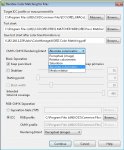MitchtheMitch
Active member
We have been G7 certified for going on 5 years now. We use a digital press and an Epson Inkjet printer for 95% of our hard copy proofs. We use ORIS PressMatcher to make 4D color corrections targeted to GRACoL (one customer requires us to target FOGRA) specifications on both proofing devices. We use Color Path Sync from FujiFilm to calculate our press curves also targeted to GRACoL. For the most part the press can get a satisfactory match to the proof, but a lot of times there are CMYK color builds in areas like page headers, color gradiations, brand colors, banners, etc. We struggle to match those specific color build from press to proof. Photographs are pretty spot on but as you all are very aware there is much more to color printing than just photos. How can me more accurately proof our presswork. I know that we have the ability to run an ECI2002 or IT8 form on our offset press then use the profile generated from that printed chart as our target in to color correct against in ORIS. So, is that the right direction? How are other printers calibrating their proofers to match their presses?
Thanks everyone
Thanks everyone














